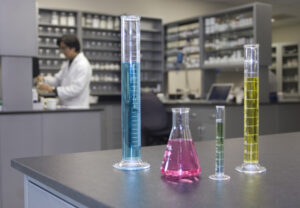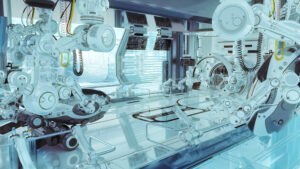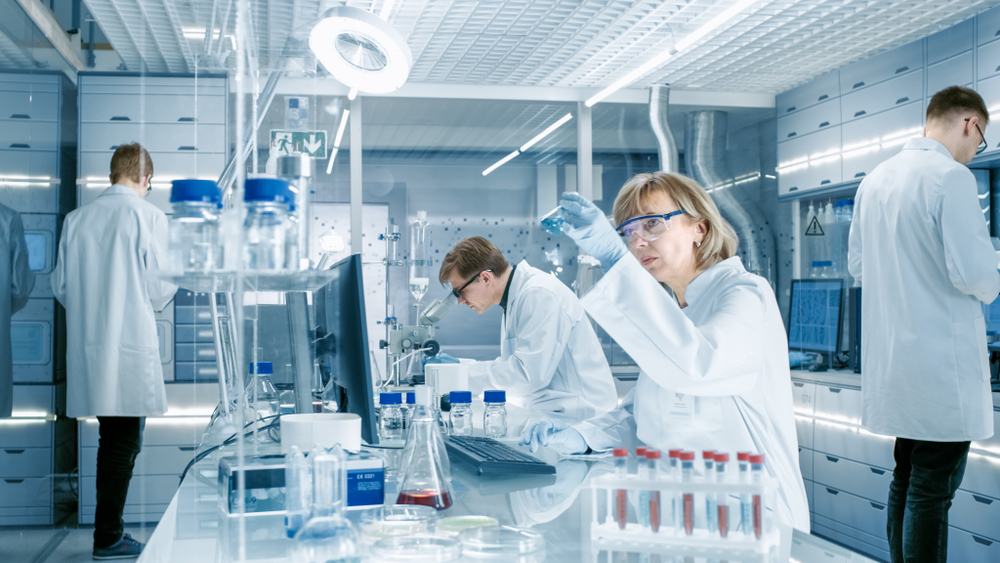
Biology laboratories are dynamic environments that require specialized equipment to facilitate research, experimentation, and analysis. Some key components are the biology lab benches, which serve as the foundation for conducting experiments and handling samples. To meet the diverse needs of modern biology labs, lab benches must combine durability with flexibility.
This article explores the importance of durable and flexible biology lab benches and discusses strategies for designing benches that meet these criteria.
What is a Biology Lab Bench?
A lab bench, also known as a laboratory bench or workstation, is a sturdy, flat surface used in laboratories for various scientific and experimental purposes. Biology lab benches are typically made of durable materials such as stainless steel, chemical-resistant laminate, or epoxy resin to withstand the rigors of laboratory work.
Biology lab benches provide a stable platform for conducting experiments, performing measurements, and handling equipment and samples. They often include features such as built-in storage, shelving, and sink units to facilitate work processes and organization in the lab.
Lab benches are essential components of laboratory furniture and are designed to meet the specific needs of different types of laboratories, such as biology, chemistry, physics, and medical labs. They can vary in size, shape, and configuration depending on the requirements of the lab and the nature of the experiments being conducted.
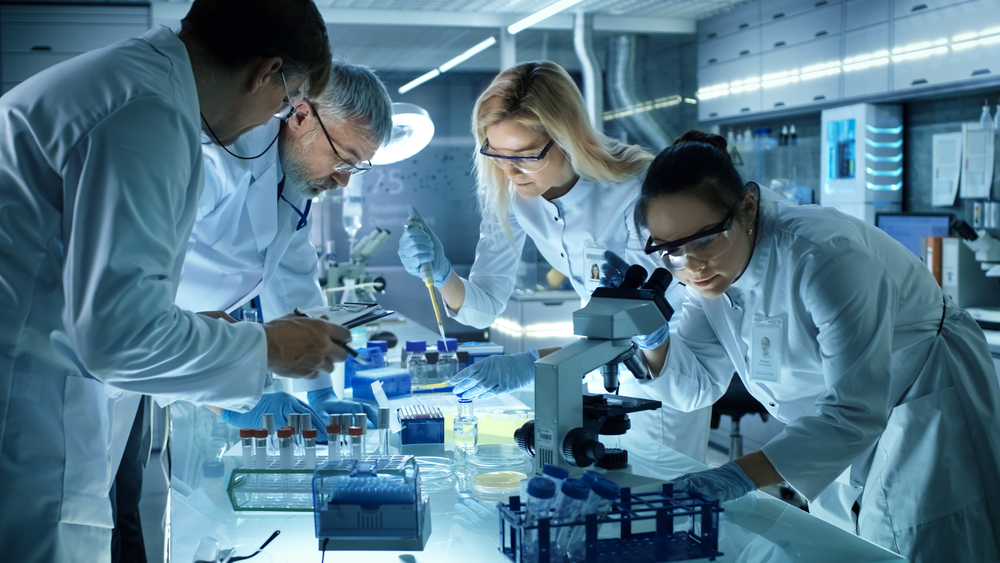
Lab Bench Placement Considerations for Flexibility
Due to the frequent changes in biology laboratory use, flexibility, and adaptability is essential in the choice of lab benches. Although some services and surfaces, such as fume hoods and sinks will be fixed elements, several options are available to meet the adaptable needs for a biology lab.
Placing fume hoods, sinks, and other fixed elements, including some casework at the lab perimeter is a practical way to ensure ample space in the center for mobile lab benches, equipment racks, and adjustable lab tables to maximize flexibility.
The structural floor system’s underside may be used to hang overhead service carriers for increased versatility and easy access. Local exhaust ventilation, computer cables, lighting fixtures, and electrical outlets on moveable biology lab benches may be linked to these service providers.
By integrating these design principles, biology lab benches can be both durable and flexible, meeting the diverse needs of ever-evolving laboratory environments.
Additional Reading: Maximizing Space: The Best Lab Cupboards for Compact Areas
Types of Biology Lab Benches
There are various types of laboratory benches, each serving different purposes based on the needs of the lab. Here are several options to consider:
1. Multi-Purpose Chemical Resistant Benches
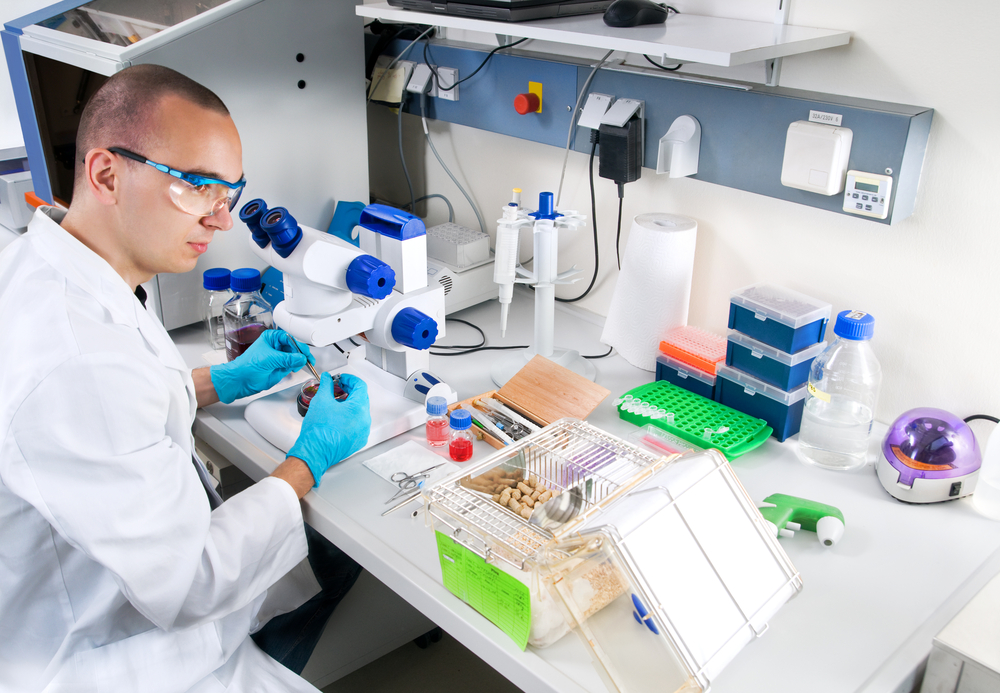
These benches typically have strong and sturdy steel frames, equipped with chemically resistant countertops, base cabinets, reagent racks, and some have connectors, and accessories.
Options include:
- Floor-mounted biology lab benches: Depending on the lab design, they can be island, side, or sink benches.
- Suspended or wall-mounted lab benches: When floor space in the biology lab is limited, mounting lab benches on the walls could free up central floor space to benefit workflow. They could be as flexible as floor-mounted laboratory benches.
- Moveable or mobile biology lab benches: Mobile benches run on lockable casters to increase flexible space optimization. These are cabinets with storage underneath a countertop, built on strong frames, heavy-duty ones often capable of supporting loads up to 60 lbs. (272 kg).
2. Wet Lab Benches
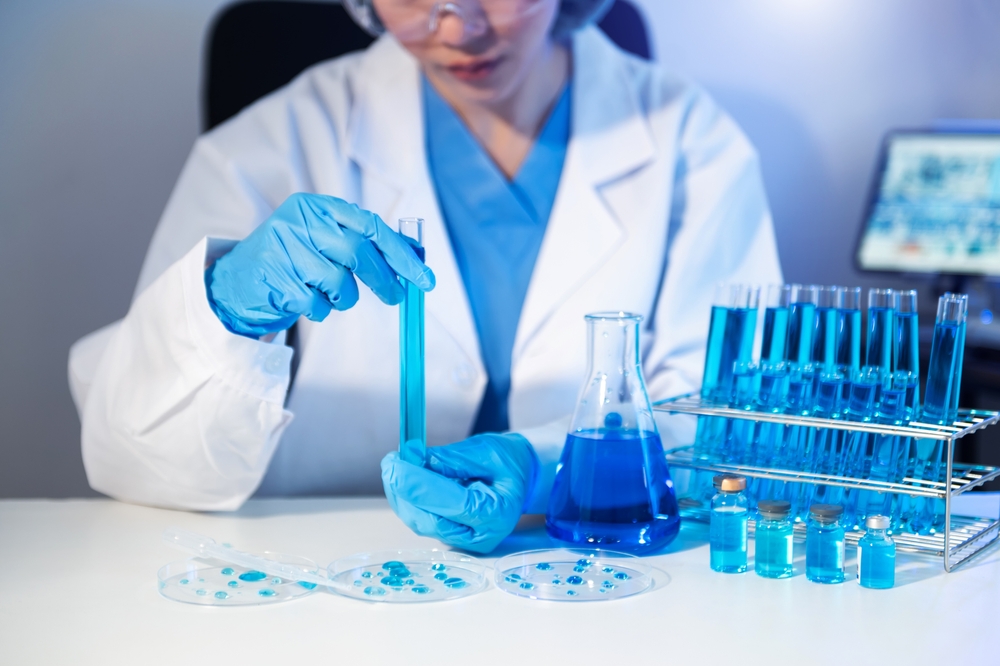
Biology lab benches for wet labs have the following requirements:
- Material: Wet benches should be made of materials that are resistant to water, chemicals, and corrosion, such as stainless steel, epoxy resin, or chemical-resistant laminate.
- Sink and Water Supply: Wet benches require a sink with hot and cold-water supply for washing and rinsing lab equipment and for conducting experiments that involve the use of liquids.
- Drainage: Wet benches need proper drainage systems to safely dispose of liquid waste and prevent spills or flooding.
- Chemical Storage: Wet benches should have adequate storage space for storing chemicals and hazardous materials, with proper labeling and segregation to prevent contamination.
- Safety Features: Wet benches should be equipped with safety features such as spill trays, splash guards, and eyewash stations to ensure the safety of lab personnel.
3. Dry Lab Benches

Biology lab benches for dry labs have the following requirements:
- Material: Dry benches can be made of a wider range of materials, including wood, laminate, or metal, as they are not exposed to corrosive liquids.
- Work Surface: Dry benches should have a smooth, flat work surface for conducting experiments and working with dry materials.
- Electrical Outlets: Dry benches should have sufficient electrical outlets for powering equipment and devices used in experiments, and also data ports for use of computer-based research and data monitoring.
- Storage: Dry benches should have storage space for storing equipment, tools, and supplies needed for conducting experiments.
- Ventilation: While not as critical as in wet benches, dry benches should have adequate ventilation to remove dust and fumes generated during experiments.
4. Biological Safety Cabinets (BSCs)
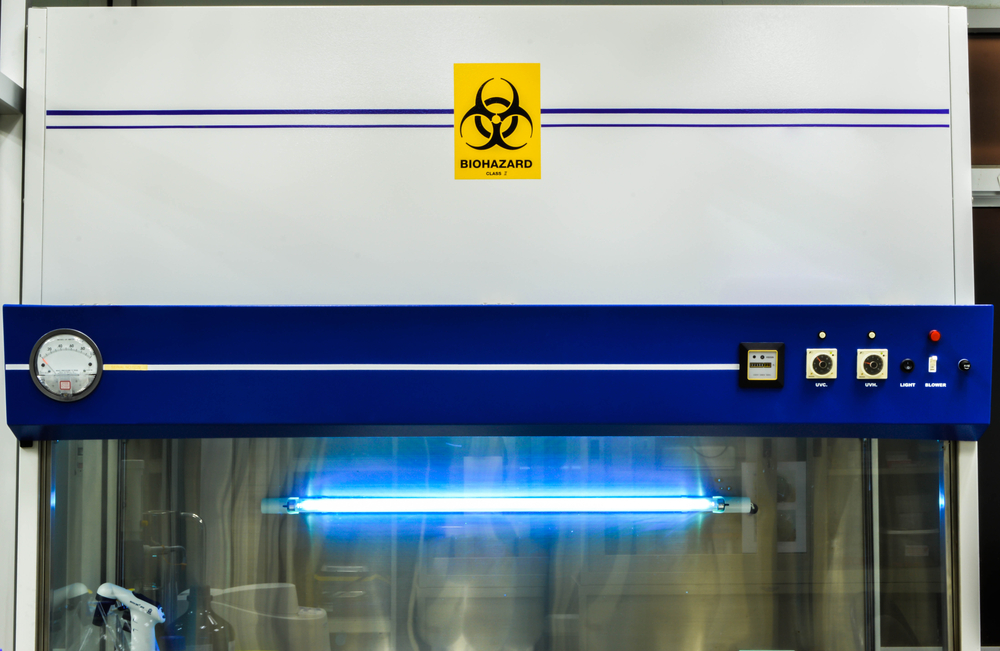
BSCs are enclosed, ventilated laboratory workspaces designed to provide both a sterile work environment and protection for the user and the environment from biohazardous materials, typically found in cleanrooms.
Functions:
- Protecting the user and the environment from exposure to pathogens by filtering air before it is exhausted.
- Preventing cross-contamination between samples being handled within the cabinet.
- Providing a sterile work area for conducting experiments involving infectious agents or other biohazards.
- Classifying into three types (I, II, and III) based on their design and level of protection, with each type offering different levels of protection for the user, the environment, and the sample.
5. Laminar Flow Benches
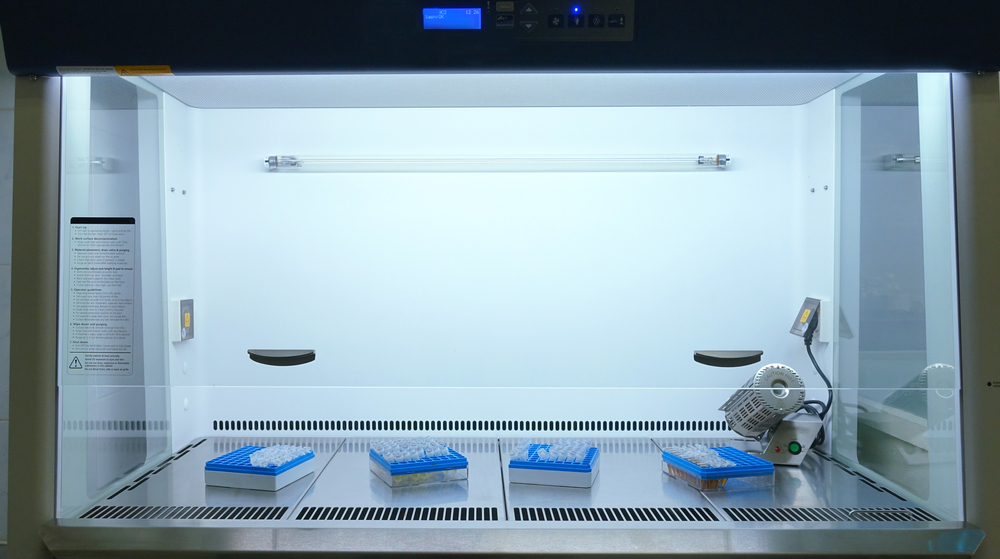
Laminar flow benches provide a workspace where air moves in a uniform, unidirectional flow to minimize airborne contamination.
Functions:
- Creating a clean, sterile work area for procedures requiring aseptic technique, such as cell culture, microbiology, and pharmaceutical work.
- Protecting samples and experiments from contamination by providing a barrier between the work area and the surrounding environment.
- Available in horizontal and vertical airflow configurations, with horizontal benches typically used for applications where the work surface needs to remain sterile and vertical benches used for applications requiring protection from contamination in the surrounding environment.
6. Fume Hoods
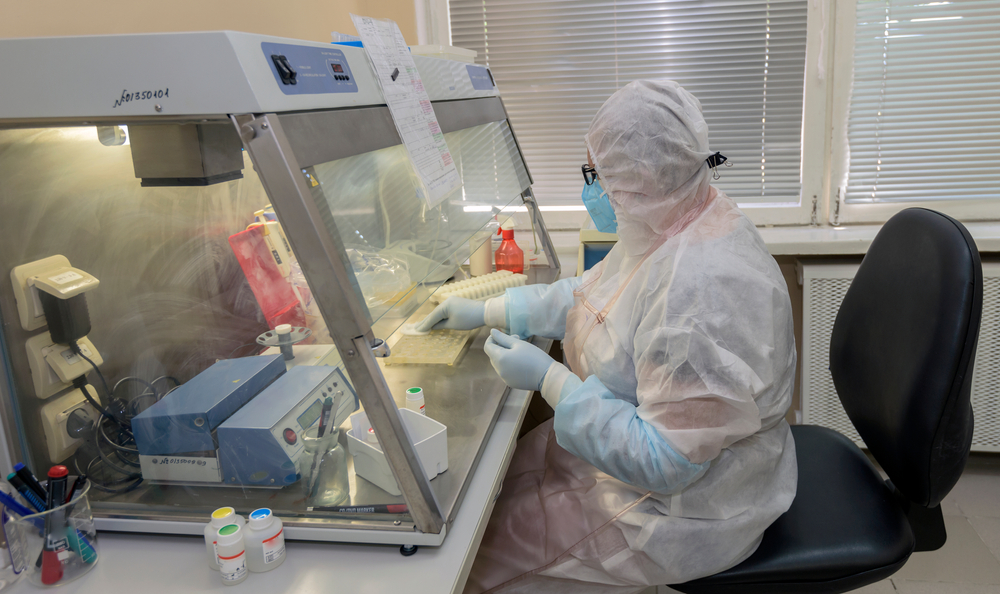
Fume hoods are ventilated enclosures designed to contain and exhaust fumes, vapors, and particles generated during laboratory procedures.
Functions:
- Protecting laboratory personnel from exposure to hazardous or noxious chemicals by containing and venting them safely.
- Preventing the release of harmful substances into the laboratory environment.
- Providing a safe workspace for handling chemicals and conducting experiments that produce harmful fumes or vapors.
- Available in different types (ductless, ducted, and recirculating) depending on the specific needs of the laboratory and the types of chemicals being used.
These biology lab benches are essential for various laboratory operations, ensuring safety, cleanliness, and efficiency in conducting experiments and research.
Ergonomic Biology Lab Benches
Ergonomic lab workbenches are benches that can be adjusted manually or electronically to meet the height requirements of a worker. The ergonomic design provides a sturdy work surface that can be customized to meet the demands of lab workers. Other than adjustable height, the adjustments also allow you to alter the width of the work surface, making various tasks more comfortable and efficient.

Typical adjustments possible on ergonomic biology lab benches:
- Mats or Pads for Footing
- Foot Rests
- Lumbar Support
- Protected Safety Edges
- Adjustable Armrests
- Focused Lighting
Ergonomically designed biology lab benches are important for several reasons:
- Improved comfort and safety: Ergonomic design considers the comfort and safety of lab workers, reducing the risk of strain injuries and promoting better posture.
- Increased productivity: Comfortable workers are often more productive. Ergonomic benches can help reduce fatigue, allowing workers to focus better on their tasks.
- Flexibility and adaptability: Ergonomic benches can be adjusted to suit the needs of different users and tasks, making them more versatile in a laboratory setting.
- Health benefits: Ergonomic design can contribute to overall health and well-being by reducing the risk of musculoskeletal disorders and other health issues related to poor posture.
- Long-term cost savings: Investing in ergonomic benches can lead to long-term cost savings by reducing the likelihood of injuries and the associated costs of healthcare and lost productivity.
Overall, ergonomic design in laboratory benches can lead to a more comfortable, safer, and more efficient working environment for lab workers.
Customization for Enhanced Flexibility and Durability

Work done in biology labs is diverse and constantly changing. Traditional standard biology lab benches allow specific routines to be performed in all conditions, except where caustic components are present. Furthermore, standard lab benches are also not equipped with plumbing and sinks for drainage, electrical cords and outlets, HVAC systems, and other specific safety and utility requirements
As biological research evolves, having biology lab benches custom designed can benefit durability and flexibility in several ways.
Every detail of the custom-made biology lab bench can be addressed to suit the purpose, including the following:
- the types of experiments done
- the physical needs of scientists
- the cultural needs of the lab personnel
- the location where the required work will be completed
- the workflow in the lab
- maintenance and cleaning needs
Structural customization options:
- Type of frame
- Seamless surfaces for ease of maintenance and cleaning
- Storage requirements
- Perfect fit in the allocated space
- Mobility
- Height and types of height adjustment features
- Type of worktop surface to enhance durability
- The load capacity
- Configuration to meet the applications and experiments requirements
- Integrating features such as sinks, gas and electrical outlets, data connections.
The finest details can be addressed, even the colors and aesthetics of the biology lab benches, where the appearance of the workspace can enhance employee morale.
Overall, custom-designed biology lab counters can enhance the durability and flexibility of the lab space, providing a functional and efficient workspace for laboratory activities.
Integration of Wet and Dry Labs
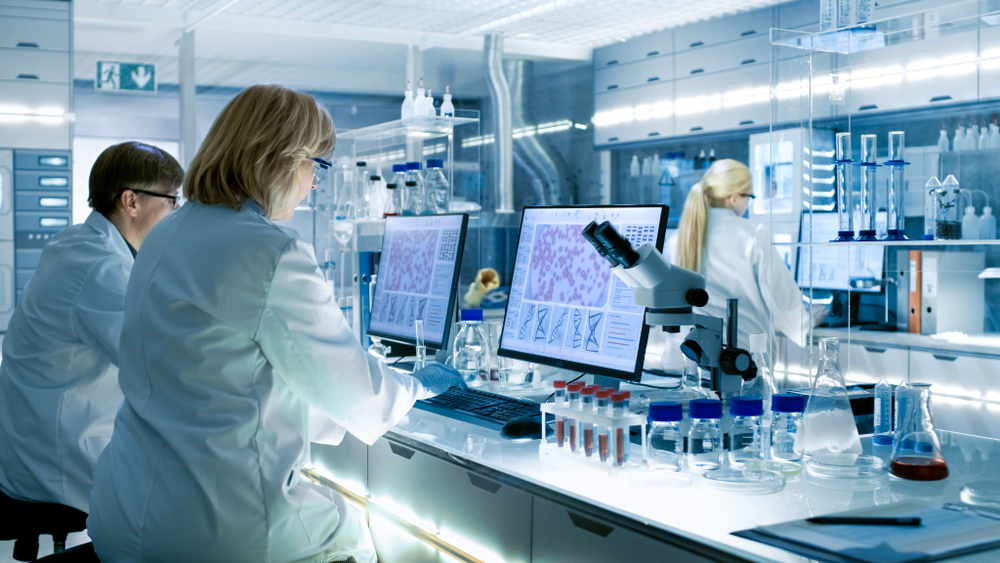
Biology labs often perform both wet and dry experiments. Wet experiments typically involve working with liquids, such as chemical reactions, cell cultures, and biochemical assays. Dry experiments, on the other hand, involve computational analysis, data interpretation, and modeling.
Both types of experiments are important in biological research, with wet experiments being more hands-on and experimental, while dry experiments are more analytical and computational.
When integrating wet and dry zones in a biology lab, the choice of biology lab benches is crucial because it has to be done without compromising safety. It requires careful planning and adherence to safety guidelines. Here are some key considerations:
- Physical Separation: Design the lab layout to physically separate wet and dry areas to minimize the risk of contamination. This can be achieved by using different benchtop materials, such as stainless steel for wet areas and chemical-resistant laminate for dry areas.
- Ventilation: Ensure that the ventilation system is designed to handle the different requirements of wet and dry areas. For example, wet areas may require fume hoods or specialized ventilation to handle chemical vapors, while dry areas may require dust extraction systems.
- Storage: Provide separate storage areas for chemicals and hazardous materials used in wet areas to prevent contamination of dry areas. Use proper labeling and storage practices to ensure safe handling and storage of materials.
- Equipment and Worktops: Use equipment and benchtop materials that are suitable for the specific tasks performed in each zone. For example, use water-resistant equipment and work surfaces in wet areas and equipment designed to handle dry materials in dry areas.
- Training: Ensure that lab personnel are trained in the safe handling of materials and equipment in both wet and dry areas. Provide clear guidelines and procedures for working in each zone.
By carefully planning the layout and operations of a laboratory, wet and dry zones can be equipped with the perfect biology lab benches for effective integration that will optimize durability and flexibility while maintaining a high level of safety for lab personnel and experimental materials.
Suitable Countertop Materials for Biology Lab Benches
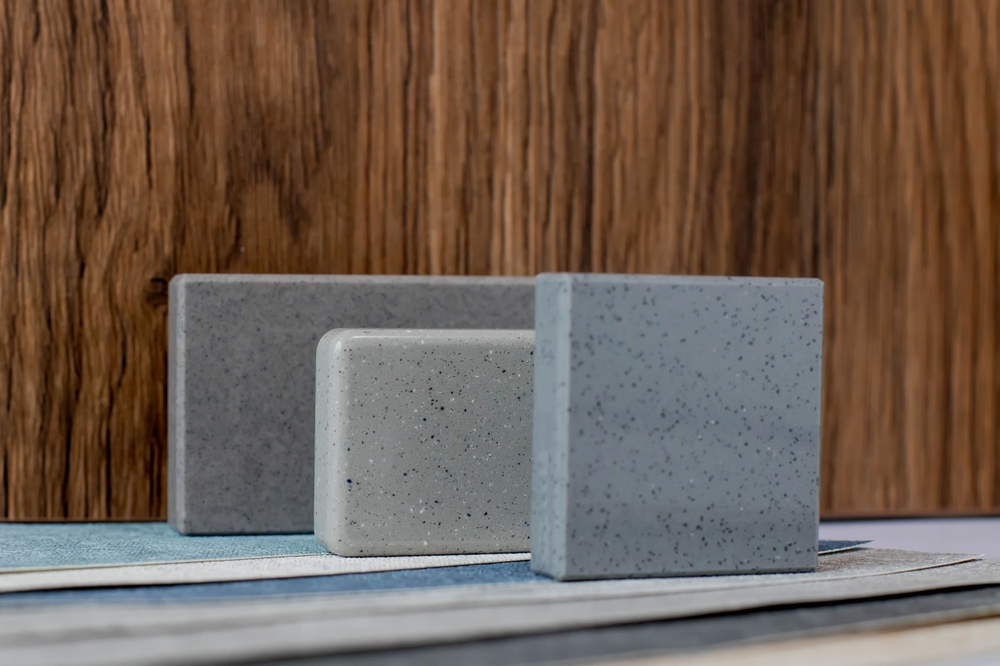
For biology lab benches that require both flexibility and durability, several materials are suitable for bench tops. These materials should be able to withstand chemical spills, physical impact, and frequent cleaning while also allowing for customization and adaptability. Here are some top options:
1. Stainless Steel
Known for its durability and resistance to corrosion, stainless steel is a popular choice for biology lab counters. It is easy to clean, can withstand high temperatures, and is resistant to most chemicals and flammables used in lab environments.
2. Epoxy Resin
Epoxy resin countertops are durable, chemical-resistant, and can be molded into various shapes and sizes to fit the specific needs of a biology lab. They are also non-porous, making them easy to clean and maintain.
3. Phenolic Resin
Phenolic resin countertops are made from layers of Kraft paper and resin that are compressed under high pressure. They are durable, chemical-resistant, and can withstand high temperatures, making them suitable for biology labs.
4. Chemical-Resistant Laminate
High-pressure laminate with a chemical-resistant finish is another option for biology lab counters. It is durable, easy to clean, and available in various colors and patterns to suit different lab aesthetics.
5. Polypropylene
Polypropylene is a thermoplastic polymer that is resistant to chemicals, acids, and bases, making it ideal for biology lab counters. It is also lightweight, easy to clean, and can be welded to create seamless joints.
Ultimately, the choice of material for biology lab benches will depend on factors such as the specific requirements of the lab, budget constraints, and aesthetic preferences. It is important to consult a laboratory furniture expert to determine the best material for your needs.
Additional Reading: Choosing the Right Lab Benches for Your Research Needs
Maintenance of Biology Lab Benches
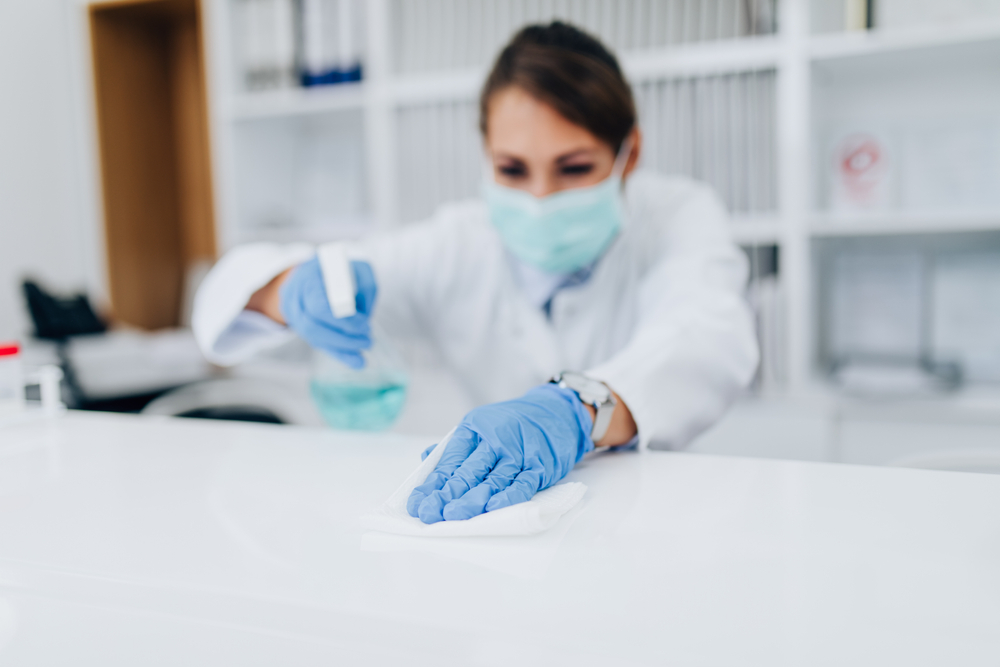
Maintaining and caring for biology lab benches is crucial to ensure their durability and safety. Here are some general guidelines:
- Regular Cleaning: Wipe down benches daily with a mild detergent and water solution to remove dust, spills, and biological contaminants. Avoid using abrasive cleaners that can damage the surface.
- Avoid Harsh Chemicals: Use only approved cleaning agents for laboratory use. Avoid strong acids, bases, and solvents that can corrode or degrade the bench material.
- Avoid Impact: Prevent dropping heavy objects or banging equipment on the bench surface, as this can cause dents or scratches.
- Protective Measures: Use cutting mats or trays to protect the bench surface from sharp instruments and spills.
- Monitor Wear and Tear: Regularly inspect benches for signs of wear, such as loose fittings, damaged edges, or worn surfaces, and repair or replace them as needed.
- Maintain Proper Ventilation: Ensure that the lab has adequate ventilation to prevent moisture buildup, which can lead to mold growth and damage the bench material.
- Avoid Excessive Weight: Do not exceed the weight capacity of the bench, as this can lead to structural damage.
- Proper Use: Educate lab users on proper bench use and care to prevent accidental damage.
By following these guidelines, you can help ensure the durability and longevity of your biology lab benches.
Additional Reading: Lab Counters: Selecting the Best Materials and Design for Your Workspace
Conclusion
In conclusion, biology lab benches play a crucial role in providing a safe, efficient, and flexible workspace for researchers and scientists. By combining durability with flexibility, lab benches can withstand the rigors of laboratory work while adapting to the evolving needs of scientific research.
With the guidance of the specialized team of lab furniture manufacturers at Genie Scientific, thoughtful design and careful consideration of materials and features, high-quality biology lab benches can maximize durability and flexibility, while enhancing the productivity and safety of your biology laboratory, ultimately advancing scientific discovery and innovation.

